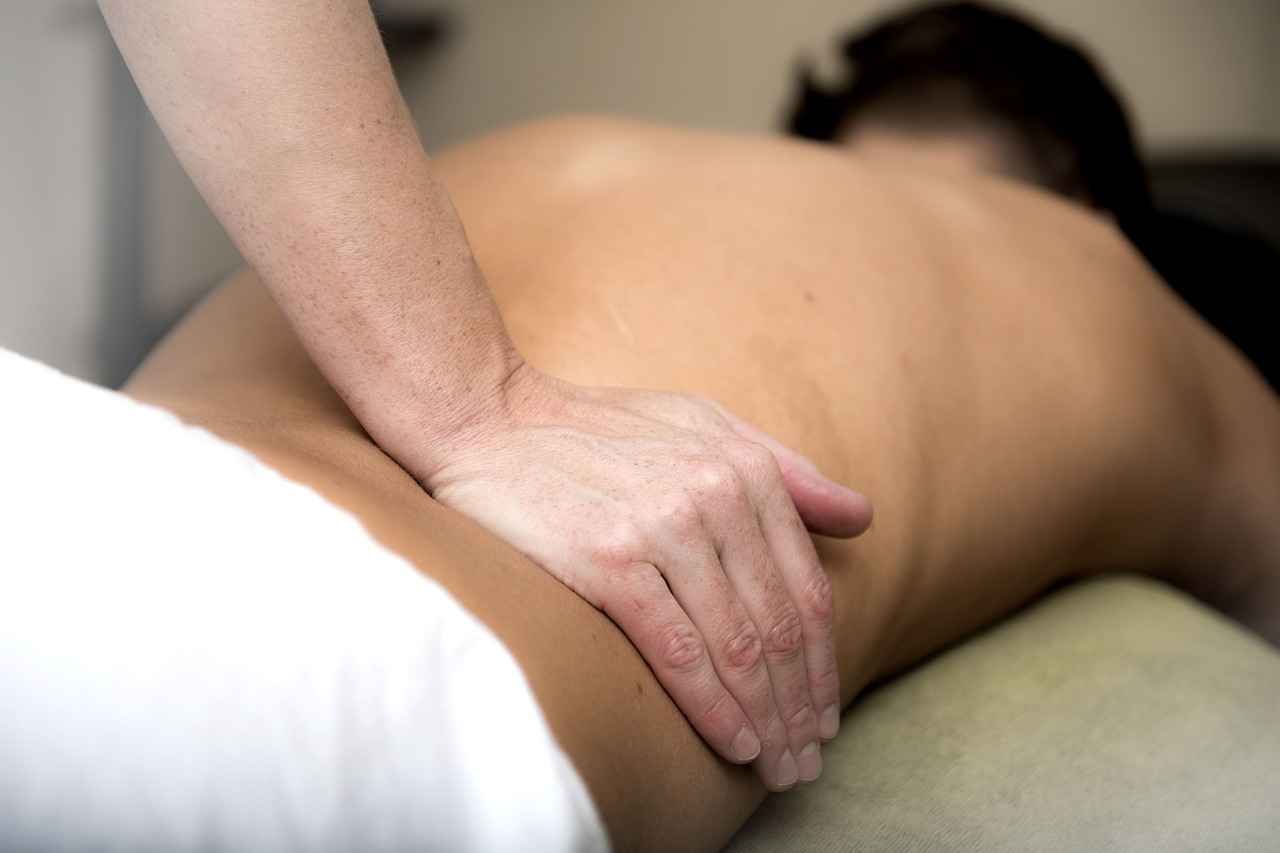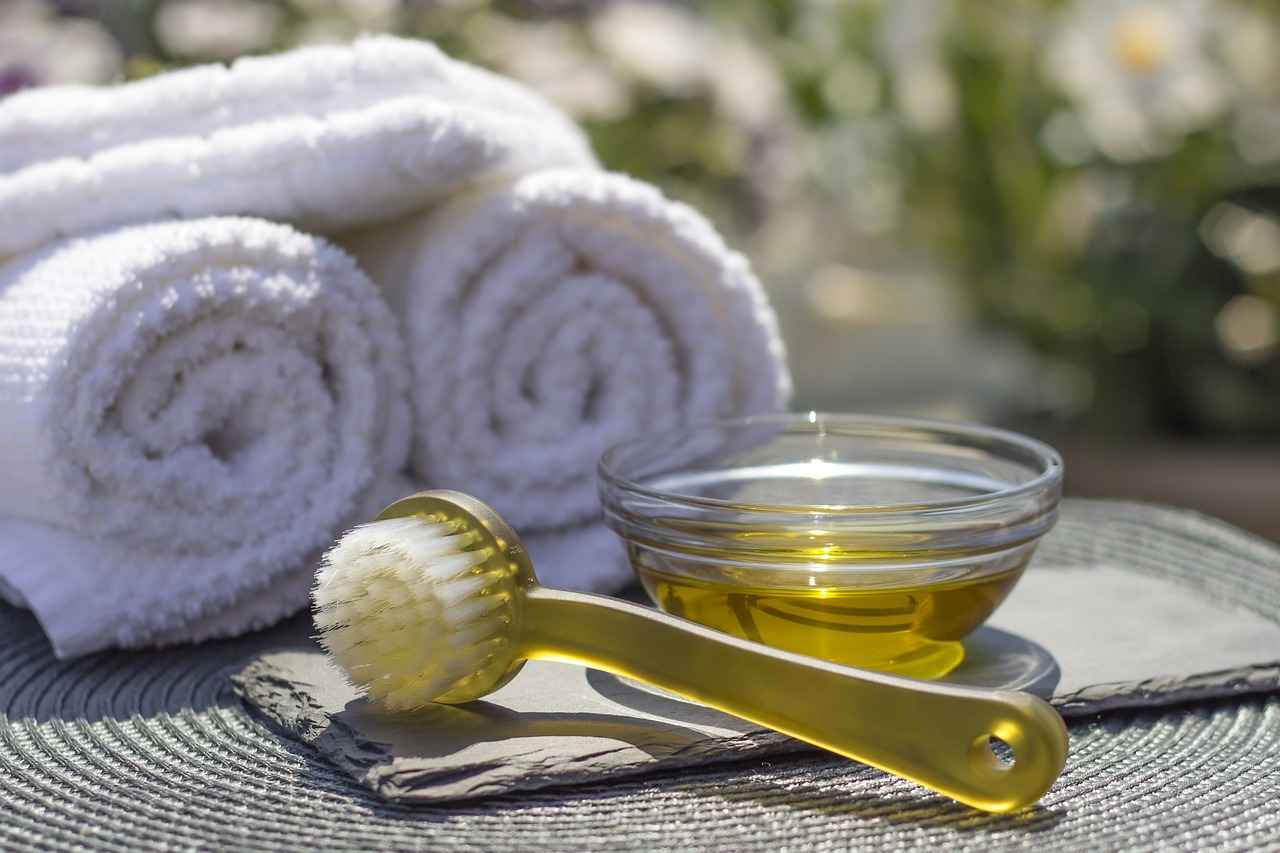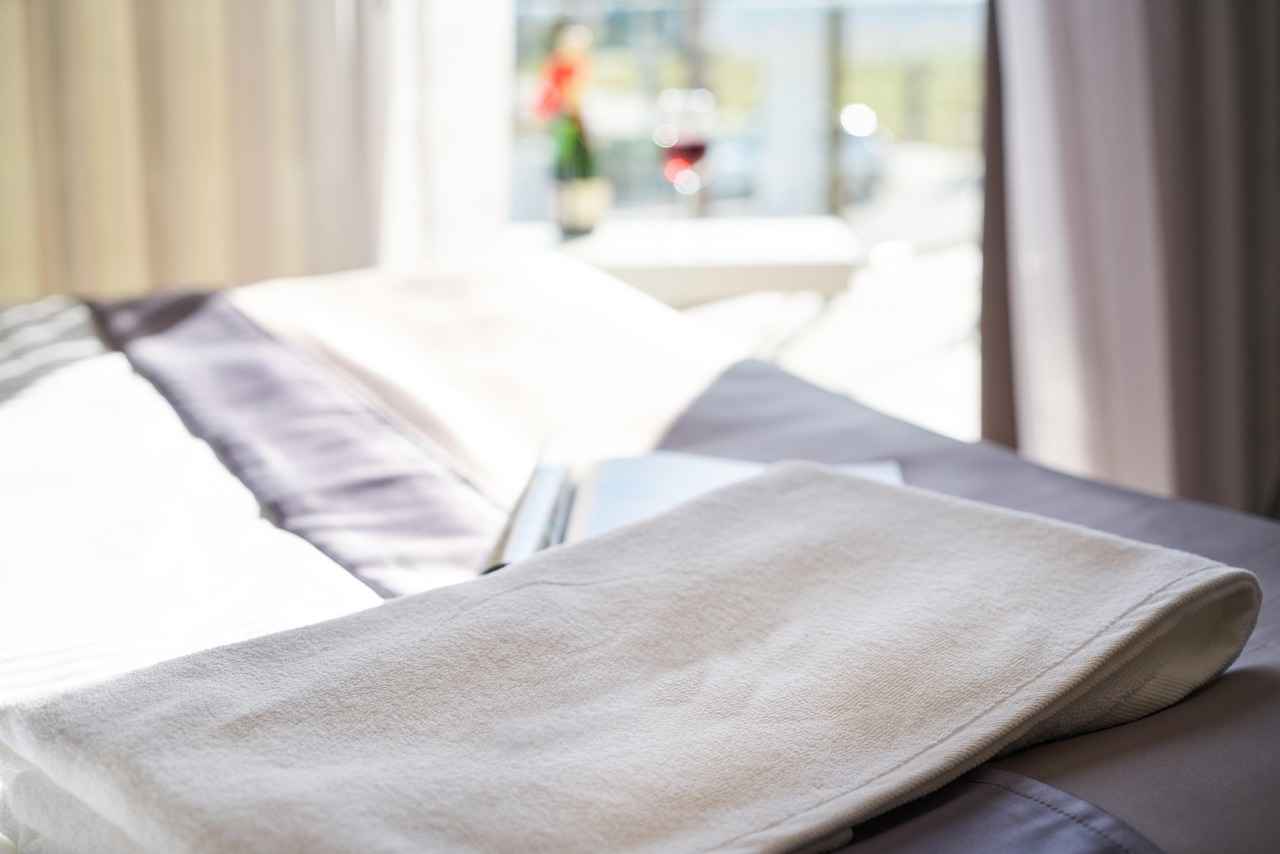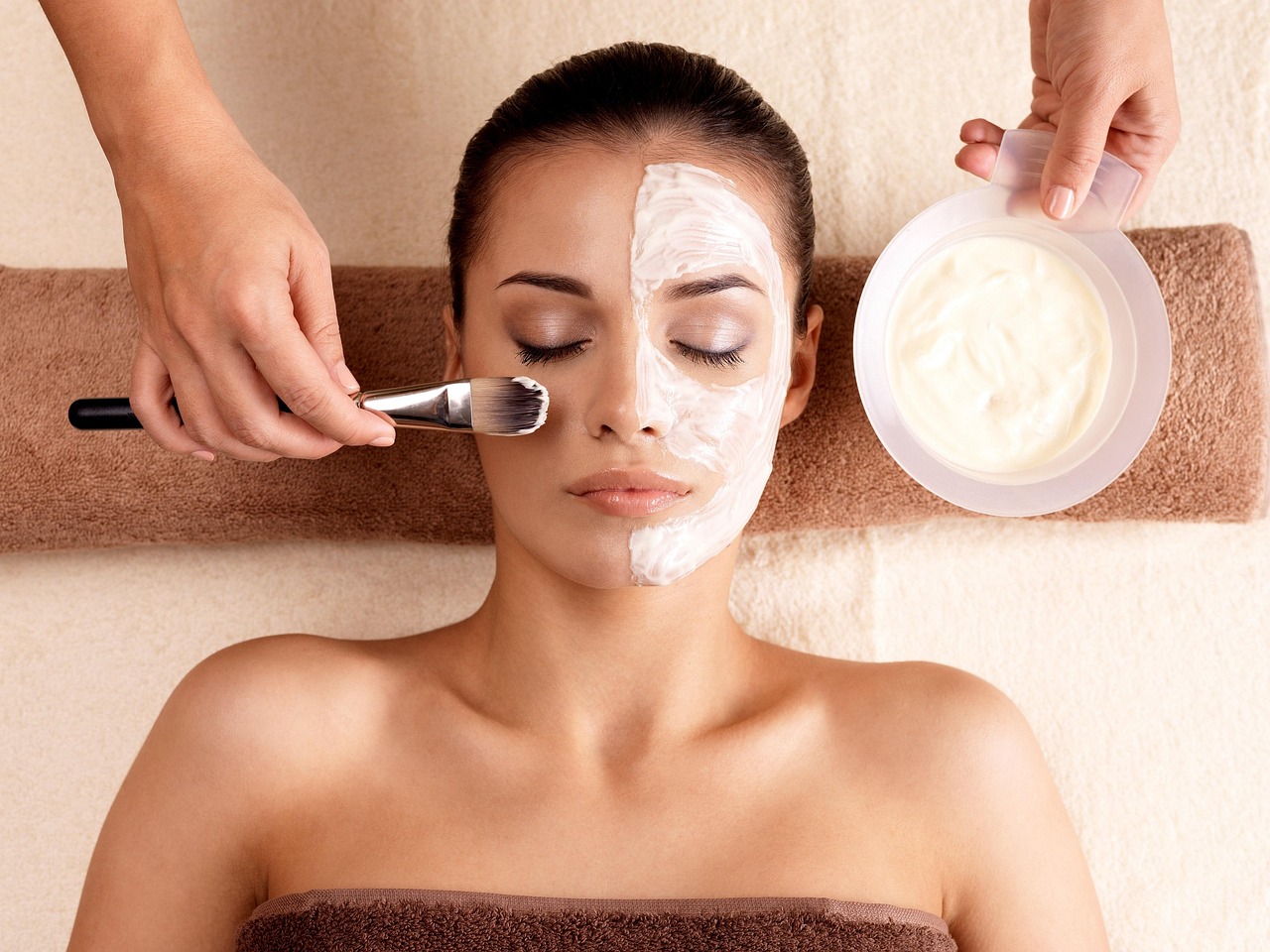This article explores the latest trends in Asian massage therapies, highlighting unique techniques, benefits, and what to consider when choosing a massage style for relaxation and wellness.
Asian massage is a rich tapestry of techniques that have evolved over centuries, drawing from cultural traditions and holistic philosophies. Understanding these diverse methods can enhance your wellness journey.
Understanding Asian Massage Techniques
Asian massage encompasses various techniques rooted in cultural traditions. Popular styles such as Thai, Shiatsu, and Tui Na each have unique origins and methods. Thai massage combines acupressure and yoga-like stretching, Shiatsu focuses on finger pressure along energy meridians, and Tui Na employs acupressure and manipulation for therapeutic benefits.
Benefits of Thai Massage
Thai massage is known for its invigorating techniques that promote improved flexibility, circulation, and stress relief. This style is particularly effective for those seeking a balance between relaxation and rejuvenation.
The Philosophy Behind Thai Massage
Rooted in Buddhist philosophy, Thai massage emphasizes mindfulness and energy flow, contributing to its therapeutic effects on both body and mind. Understanding this philosophy can deepen your appreciation for the practice.
Energy Lines in Thai Massage
The concept of Sen lines is crucial for understanding Thai massage. These energy pathways influence physical and emotional health, guiding the massage therapist in their approach.
Common Techniques Used in Thai Massage
- Stretching
- Rhythmic compressions
- Joint mobilization
These techniques work in harmony to release tension and enhance overall well-being.
Shiatsu: The Japanese Touch
Shiatsu is a form of Japanese massage that utilizes finger pressure along meridians. This technique promotes holistic health by balancing the body’s energy and relieving stress.
Exploring Tui Na: The Chinese Approach
Tui Na is a traditional Chinese therapeutic massage focusing on acupressure and manipulation. It is particularly effective for pain relief and overall wellness.
Techniques and Tools Used in Tui Na
Tui Na employs various hand techniques and tools, enhancing treatment effectiveness. This approach specifically targets ailments and promotes healing within the body.
Who Can Benefit from Tui Na?
Tui Na is suitable for various conditions, from chronic pain to stress relief. It is beneficial for individuals seeking a non-invasive method to improve their health.
How to Choose the Right Asian Massage for You
Selecting the ideal massage style can be overwhelming. Here are some practical tips to help you assess your personal needs:
Understanding Your Body’s Needs
Before choosing a massage, it’s essential to understand your body’s specific needs. Identifying areas of tension and discomfort will help tailor your massage experience.
Consulting with Professionals
Consulting with a qualified massage therapist can provide valuable insights. Effective communication and consultation are key to selecting the right Asian massage for your unique requirements.

Understanding Asian Massage Techniques
Asian massage is a rich tapestry of techniques that have been developed over centuries, each rooted in the cultural traditions of its origin. This section examines some of the most popular styles, including Thai, Shiatsu, and Tui Na, highlighting their unique methodologies and historical backgrounds.
Originating from Thailand, Thai massage is a unique combination of acupressure, yoga, and meditation. Practitioners use their hands, feet, and even elbows to apply pressure along the body’s energy lines, known as Sen lines. This technique not only promotes relaxation but also enhances flexibility and energy flow.
Shiatsu, which translates to “finger pressure,” is a traditional Japanese massage technique that focuses on applying pressure to specific points along the body’s meridians. This method is based on the principles of traditional Chinese medicine and aims to balance the body’s energy, or Qi. Shiatsu is known for its ability to relieve tension, improve circulation, and promote overall wellness.
Tui Na is a form of therapeutic massage that has been practiced in China for over 2,000 years. It combines acupressure with various hand techniques to address specific health issues, such as pain relief and muscle tension. Tui Na practitioners use a range of motions, including kneading, rolling, and pressing, to stimulate the body’s natural healing processes.
Each of these massage styles offers distinct benefits. Thai massage enhances flexibility and energy, Shiatsu promotes balance and relaxation, while Tui Na effectively addresses pain and tension. Understanding these benefits can help individuals select the right technique for their personal wellness journey.
In summary, Asian massage techniques are deeply rooted in their cultural origins, offering a variety of approaches to health and wellness. Whether you seek relaxation, pain relief, or energy balance, exploring these unique styles can lead to a more fulfilling massage experience.

Benefits of Thai Massage
Thai massage is a unique form of bodywork that integrates the principles of acupressure and yoga-like stretching, creating a holistic experience that promotes both physical and mental well-being. This ancient practice, originating from Thailand, offers a multitude of benefits that can enhance overall health and vitality.
- Improved Flexibility: One of the most significant advantages of Thai massage is its ability to enhance flexibility. The gentle stretching techniques used during the massage help to elongate muscles and increase the range of motion in joints, making it an ideal choice for athletes and those with active lifestyles.
- Enhanced Circulation: The combination of acupressure and rhythmic movements stimulates blood flow throughout the body. This improved circulation can lead to better oxygenation of tissues and faster recovery from physical exertion.
- Stress Relief: Thai massage is renowned for its calming effects on the mind and body. By focusing on energy lines and releasing tension, it helps to reduce stress and anxiety levels, promoting a sense of relaxation and tranquility.
- Pain Relief: Many individuals turn to Thai massage for relief from chronic pain conditions. The targeted pressure applied to specific points can alleviate discomfort and tension, particularly in the back, neck, and shoulders.
- Boosted Energy Levels: Unlike many other forms of massage that may leave you feeling sleepy, Thai massage often invigorates the body. The combination of stretching and acupressure can enhance energy levels, making it a perfect choice for those needing a revitalizing boost.
Incorporating Thai massage into your wellness routine can lead to a more balanced and harmonious lifestyle. Whether you seek relief from tension, improved flexibility, or simply a moment of relaxation, Thai massage offers a comprehensive approach to health and well-being.
The Philosophy Behind Thai Massage
Thai massage is not just a physical practice; it is a holistic approach deeply embedded in Buddhist philosophy and traditional healing methods. This ancient form of therapy emphasizes the importance of mindfulness and the flow of energy within the body, contributing significantly to its therapeutic effects on both the body and mind.
At the core of Thai massage is the belief that energy flows through specific pathways known as Sen lines. These lines are thought to connect various organs and systems within the body, creating a network that influences overall health. When these energy lines are blocked or disrupted, it can lead to physical discomfort and emotional distress. Thai massage aims to restore balance by applying pressure along these pathways, facilitating the smooth flow of energy.
Mindfulness, a key component of Buddhist philosophy, plays an essential role in the practice of Thai massage. Practitioners are trained to be fully present, enhancing the experience for both the therapist and the recipient. This state of awareness allows for a deeper connection to the body, enabling the therapist to identify areas of tension and discomfort more effectively. The combination of focused attention and intentional movement creates a profound sense of relaxation and healing.
Additionally, the stretching techniques used in Thai massage resemble yoga poses, further promoting flexibility and releasing physical tension. This practice not only benefits the body but also encourages mental clarity and emotional well-being. By integrating physical manipulation with mindfulness, Thai massage offers a comprehensive approach to wellness that addresses both physical and mental health.
In summary, the philosophy behind Thai massage is a harmonious blend of ancient wisdom and practical techniques. By fostering a deep connection between the mind and body, it serves as a powerful tool for achieving overall health and balance.
Energy Lines in Thai Massage
Energy lines play a pivotal role in the practice of Thai massage, deeply influencing both the therapeutic process and the overall experience. Known as Sen lines, these energy pathways are believed to be channels through which vital energy, or “Prana”, flows. Understanding these lines is essential for both practitioners and clients, as they form the basis of many techniques used in Thai massage.
Thai massage is not merely a physical treatment; it is a holistic approach that integrates the body, mind, and spirit. The philosophy behind Sen lines is rooted in ancient traditions, where it is believed that blockages or imbalances in these energy pathways can lead to physical ailments and emotional distress. By stimulating these lines, therapists aim to restore harmony and promote overall well-being.
There are several key Sen lines that practitioners focus on during a session:
- Sen Sumana: This line runs along the spine and is crucial for emotional balance.
- Sen Kalathari: Located in the legs, it is associated with grounding and stability.
- Sen Thawari: This line traverses the arms and is linked to creativity and expression.
- Sen Uthayak: Found in the abdomen, it is connected to digestion and personal power.
During a Thai massage session, therapists utilize various techniques, including stretching, acupressure, and rhythmic compressions, to stimulate these energy lines. This approach not only alleviates physical tension but also enhances the flow of energy, resulting in profound relaxation and rejuvenation.
In addition to physical benefits, the focus on Sen lines encourages mindfulness and awareness, allowing individuals to reconnect with their bodies. By understanding the significance of these energy pathways, clients can better appreciate the holistic nature of Thai massage and its potential to facilitate healing on multiple levels.
Ultimately, the concept of energy lines in Thai massage underscores the importance of balance and flow in achieving optimal health. Whether you are a seasoned practitioner or a first-time client, recognizing the role of Sen lines can enhance your massage experience and promote lasting wellness.
Sen
Asian massage therapies are gaining popularity globally, offering a range of techniques that not only promote relaxation but also enhance overall wellness. This article explores the latest trends in Asian massage, focusing on unique methods, their benefits, and what to consider when selecting the right massage style for your needs.
Understanding Asian Massage Techniques
Asian massage encompasses a variety of techniques rooted in cultural traditions. Popular styles include Thai, Shiatsu, and Tui Na, each with its own origins and methods:
- Thai Massage: Combines acupressure and yoga-like stretching.
- Shiatsu: A Japanese technique utilizing finger pressure along meridians.
- Tui Na: A Chinese method focusing on acupressure and manipulation.
Benefits of Thai Massage
Thai massage is renowned for its invigorating techniques that enhance flexibility, circulation, and stress relief. The philosophy behind Thai massage is deeply rooted in Buddhism and traditional medicine, emphasizing mindfulness and energy flow.
Energy Lines in Thai Massage
The concept of lines is crucial in Thai massage, influencing both physical and emotional health during sessions. Understanding these energy pathways can enhance the therapeutic effects of the massage.
Common Techniques Used in Thai Massage
Thai massage employs various methods, including stretching and rhythmic compressions, each with specific benefits aimed at improving overall well-being.
Shiatsu: The Japanese Touch
Shiatsu is a holistic approach to health that uses finger pressure along meridians. Its principles and techniques promote balance and well-being, making it a popular choice for many.
Exploring Tui Na: The Chinese Approach
Tui Na focuses on acupressure and manipulation, providing effective pain relief and promoting healing. Various hand techniques and tools are utilized to enhance treatment effectiveness.
Who Can Benefit from Tui Na?
Tui Na is suitable for various conditions, including chronic pain and stress relief. Understanding who can benefit from this powerful form of massage therapy is essential for effective treatment.
How to Choose the Right Asian Massage for You
Selecting the ideal massage style can be overwhelming. Here are some practical tips for assessing personal needs:
- Understanding Your Body’s Needs: Identify areas of tension and discomfort.
- Consulting with Professionals: Communication with a qualified therapist is key to making an informed choice.
lines in Thai massage is crucial for understanding its practice. This section explains how these energy pathways influence physical and emotional health during a massage session.
Popular Trends in Asian Massage and What to Try Next
This article explores the latest trends in Asian massage therapies, highlighting unique techniques, benefits, and what to consider when choosing a massage style for relaxation and wellness.
Understanding Asian Massage Techniques
Asian massage encompasses various techniques rooted in cultural traditions. This section delves into the fundamentals of popular styles like Thai, Shiatsu, and Tui Na, explaining their origins and methods.
Benefits of Thai Massage
Thai massage is known for its invigorating techniques that combine acupressure and yoga-like stretching. Here, we explore its numerous benefits, including improved flexibility, circulation, and stress relief.
The Philosophy Behind Thai Massage
Thai massage is deeply rooted in Buddhist philosophy and traditional medicine. This subsection examines how mindfulness and energy flow contribute to its therapeutic effects on the body and mind.
Energy Lines in Thai Massage
The concept of Sen lines in Thai massage is crucial for understanding its practice. These energy pathways influence physical and emotional health during a massage session. The following table illustrates the primary Sen lines:
| Sen Line | Description |
|---|---|
| Sen Sumana | Runs from the head to the heart, influencing emotional balance. |
| Sen Thawara | Connects the heart to the lower body, promoting physical vitality. |
| Sen Khu | Associated with the digestive organs, enhancing metabolic health. |
Common Techniques Used in Thai Massage
- Stretching: Involves yoga-like poses to enhance flexibility.
- Rhythmic Compressions: Provides deep tissue relief and relaxation.
- Acupressure: Targets specific pressure points for pain relief.
Shiatsu: The Japanese Touch
Shiatsu is a form of Japanese massage that uses finger pressure along meridians. This section discusses its principles, techniques, and the holistic approach to health it promotes.
Exploring Tui Na: The Chinese Approach
Tui Na is a traditional Chinese therapeutic massage that focuses on acupressure and manipulation. This section provides insights into its techniques and health benefits, especially for pain relief.
Techniques and Tools Used in Tui Na
Tui Na utilizes various hand techniques and tools to enhance treatment effectiveness. Here, we explore these methods and how they target specific ailments and promote healing.
Who Can Benefit from Tui Na?
Tui Na is suitable for various conditions, from chronic pain to stress relief. This subsection discusses who can benefit most from this powerful form of massage therapy.
How to Choose the Right Asian Massage for You
Selecting the ideal massage style can be overwhelming. This section offers practical tips on assessing personal needs and preferences to find the best Asian massage for relaxation and healing.
Understanding Your Body’s Needs
Before choosing a massage, it’s essential to understand your body’s specific needs. This subsection provides guidance on identifying areas of tension and discomfort to tailor your massage experience.
Consulting with Professionals
Consulting with a qualified massage therapist can help you make an informed choice. Here, we discuss the importance of communication and consultation in selecting the right Asian massage for your needs.
Common Techniques Used in Thai Massage
Thai massage is a unique blend of ancient techniques that promote physical and mental well-being. This traditional therapy is not just about relaxation; it incorporates a variety of methods designed to enhance flexibility, circulation, and overall health. Below, we will explore some of the most commonly used techniques in Thai massage and their specific benefits.
- Stretching: One of the hallmark techniques of Thai massage is deep stretching. This method mimics yoga poses, allowing the therapist to guide the recipient into various positions. The benefits include improved flexibility, reduced muscle tension, and enhanced range of motion.
- Rhythmic Compression: This technique involves applying rhythmic pressure along the body’s energy lines, known as Sen lines. This method helps to relieve muscle tightness and promotes blood circulation, leading to a sense of relaxation and rejuvenation.
- Acupressure: Similar to acupuncture but without needles, acupressure involves applying pressure to specific points on the body. This technique is believed to help release blockages in energy flow, providing relief from pain and promoting emotional balance.
- Joint Mobilization: Thai massage often includes gentle manipulation of joints. This technique helps to enhance joint function and can alleviate stiffness, making it particularly beneficial for those with arthritis or joint issues.
- Breathwork: Incorporating breath control into the massage enhances relaxation and mindfulness. Practitioners encourage deep, rhythmic breathing, which can help calm the mind and improve the overall effectiveness of the massage.
Each of these techniques plays a crucial role in the holistic approach of Thai massage. By combining physical manipulation with mindful practices, Thai massage not only addresses physical discomfort but also fosters a deeper connection between the body and mind, leading to a more profound sense of well-being.
Shiatsu: The Japanese Touch
Shiatsu is a traditional Japanese massage technique that emphasizes the use of finger pressure along specific energy pathways known as meridians. This holistic approach integrates elements of both physical and emotional well-being, making it a unique form of therapy. In this section, we will explore the fundamental principles, techniques, and the overall health benefits that Shiatsu promotes.
The core philosophy of Shiatsu is rooted in the concept of Qi (or Chi), which refers to the vital energy that flows through the body. Practitioners believe that when Qi is blocked or stagnant, it can lead to various health issues. Shiatsu aims to restore balance by applying pressure to specific points along the meridians, encouraging the free flow of energy.
| Technique | Description |
|---|---|
| Finger Pressure | Applying pressure using fingers, palms, and thumbs to stimulate acupressure points. |
| Stretching | Gentle stretches are incorporated to enhance flexibility and relieve tension. |
| Rotational Movements | These movements help to release muscle tightness and improve circulation. |
Shiatsu is not only about physical manipulation; it also incorporates elements of mindfulness and breathing techniques. Practitioners often encourage clients to focus on their breath, promoting relaxation and a deeper connection to their body. This comprehensive approach makes Shiatsu beneficial for a range of conditions, including stress, anxiety, and chronic pain.
- Stress Relief: Shiatsu can significantly reduce stress levels, promoting overall mental well-being.
- Pain Management: The targeted pressure techniques can alleviate chronic pain conditions.
- Improved Circulation: Shiatsu enhances blood flow, which can aid in recovery and rejuvenation.
In conclusion, Shiatsu offers a unique blend of physical and emotional healing. By focusing on the flow of energy within the body, this Japanese massage technique provides a holistic approach that can benefit anyone seeking relaxation and improved health.
Exploring Tui Na: The Chinese Approach
Tui Na is a traditional Chinese therapeutic massage that has been practiced for centuries, focusing on acupressure and manipulation techniques. This ancient form of therapy is not just about relaxation; it is deeply rooted in the principles of Traditional Chinese Medicine (TCM) and is designed to promote overall health and well-being.
The primary techniques used in Tui Na include pushing, grasping, kneading, and rolling. These methods aim to stimulate the flow of Qi (energy) in the body, which is believed to be essential for maintaining balance and health. By applying pressure to specific acupressure points, Tui Na can help alleviate various physical ailments, including muscle tension, joint pain, and headaches.
One of the significant health benefits of Tui Na is its effectiveness in pain relief. Studies have shown that this massage technique can significantly reduce chronic pain conditions such as lower back pain and arthritis. Additionally, Tui Na is known to improve circulation and enhance the body’s natural healing processes, making it an excellent choice for those recovering from injuries.
Furthermore, Tui Na is beneficial for mental health, as it promotes relaxation and reduces stress levels. The rhythmic movements and gentle pressure can help calm the mind, making it an excellent option for individuals dealing with anxiety or emotional distress.
Incorporating Tui Na into your wellness routine can lead to long-term health benefits. It is particularly effective when combined with other forms of therapy, such as acupuncture or herbal medicine, to provide a holistic approach to health.
Overall, Tui Na offers a unique blend of physical and mental health benefits, making it a valuable addition to anyone’s self-care regimen. Whether you are seeking relief from pain or looking to enhance your overall well-being, Tui Na provides a comprehensive solution rooted in traditional practices.
Techniques and Tools Used in Tui Na
Tui Na, a traditional Chinese therapeutic massage, employs a variety of hand techniques and specialized tools to enhance its effectiveness. This ancient practice is not merely a form of relaxation; it is a comprehensive approach to healing that targets specific ailments and promotes overall well-being. In this section, we will explore the distinct methods used in Tui Na and how they contribute to its therapeutic benefits.
One of the primary techniques utilized in Tui Na is acupressure. This method involves applying pressure to specific points on the body, known as acupoints, to stimulate the flow of Qi (energy) and restore balance. By targeting these acupoints, practitioners can effectively address issues such as chronic pain, stress, and muscle tension.
Additionally, Tui Na incorporates various manipulative techniques, including kneading, rolling, and pressing. These actions help to improve circulation and enhance the body’s natural healing processes. The use of stretching techniques is also common, allowing for greater flexibility and the release of tight muscles.
In some cases, practitioners may use tools such as wooden sticks or gua sha Moreover, Tui Na is often tailored to the individual’s specific health concerns. By assessing the client’s physical condition and energy levels, a skilled practitioner can customize the treatment plan, ensuring that the techniques and tools used are aligned with the client’s unique needs. Ultimately, the combination of various hand techniques and tools in Tui Na not only enhances the treatment’s effectiveness but also fosters a holistic approach to health, making it a valuable option for those seeking relief from both physical and emotional ailments. Tui Na is a traditional Chinese massage therapy that offers numerous benefits for a wide range of individuals. Its unique combination of acupressure techniques and physical manipulation makes it particularly effective for various health conditions. Understanding who can benefit from Tui Na can help individuals make informed decisions about their wellness journeys. One of the primary groups that can benefit from Tui Na is those suffering from chronic pain. Conditions such as lower back pain, arthritis, and migraines can be alleviated through targeted pressure and manipulation. The therapy works by stimulating specific acupressure points, promoting blood circulation, and releasing tension in the muscles. Additionally, individuals experiencing stress and anxiety may find Tui Na to be a valuable tool for relaxation. The therapy encourages the release of endorphins and reduces cortisol levels, leading to a calmer state of mind. Regular sessions can enhance emotional well-being and improve overall mental health. People recovering from injuries can also benefit significantly from Tui Na. The massage aids in the healing process by increasing blood flow to injured areas, reducing inflammation, and promoting flexibility. It can be particularly helpful for athletes or individuals engaged in physical activities who need to recover from strains or sprains. Furthermore, individuals with digestive issues may find relief through Tui Na. The therapy stimulates the digestive organs, helping to alleviate symptoms of bloating, constipation, and other gastrointestinal discomforts. This holistic approach can significantly enhance digestive health. In summary, Tui Na is a versatile therapy suitable for various conditions, including chronic pain, stress relief, injury recovery, and digestive issues. Its ability to target multiple health concerns makes it a powerful option for those seeking natural healing methods.
Who Can Benefit from Tui Na?
How to Choose the Right Asian Massage for You
Selecting the ideal massage style can indeed be overwhelming, given the myriad of options available. To help you navigate this journey, we present practical tips for assessing your personal needs and preferences, ensuring you find the best Asian massage for relaxation and healing.
Assess Your Personal Needs
- Identify Areas of Tension: Take note of any specific areas in your body that feel tense or sore. This will guide you in selecting a massage technique that targets those areas effectively.
- Consider Your Health Conditions: If you have any chronic conditions, such as back pain or anxiety, it’s crucial to consider these when choosing a massage style. Some techniques may be more beneficial than others based on your health status.
Understand Different Massage Styles
- Thai Massage: Known for its dynamic stretches and acupressure, this style is ideal for those seeking both relaxation and physical rejuvenation.
- Shiatsu: This Japanese technique focuses on finger pressure along meridians, making it suitable for individuals who prefer a more precise touch.
- Tui Na: A Chinese massage that combines acupressure and manipulation, beneficial for pain relief and overall well-being.
Consult with Professionals
Engaging with a qualified massage therapist is essential. A professional can provide insights into which style may best suit your needs based on your physical condition and personal preferences. Don’t hesitate to ask questions about their techniques and how they can cater to your specific requirements.
Trial and Feedback
Finally, consider trying out different styles to see what resonates with you. After each session, take a moment to reflect on how you feel. This feedback will be invaluable in determining which massage style is the most beneficial for your relaxation and healing journey.
Understanding Your Body’s Needs
Understanding your body’s needs is a crucial step in enhancing your overall wellness through massage therapy. Each individual has unique physical requirements and preferences, which can significantly influence the effectiveness of a massage. In this section, we will provide you with essential guidance on how to identify areas of tension and discomfort, enabling you to tailor your massage experience for optimal benefits.
First, it is important to conduct a self-assessment. Take a moment to reflect on your daily activities and any physical discomfort you may have experienced. Consider the following:
- Muscle Tension: Are there specific areas in your body that feel tight or sore? Common spots include the neck, shoulders, and lower back.
- Stress Levels: How stressed do you feel on a regular basis? High stress can manifest physically, leading to muscle tension or headaches.
- Posture: Do you find yourself slouching or sitting for long periods? Poor posture can create imbalances and discomfort in various muscle groups.
Next, consider keeping a pain journal. This can help you track discomfort patterns over time. Note when you feel pain, its intensity, and any activities that may have contributed to it. This information can be invaluable when discussing your needs with a massage therapist.
Moreover, it is beneficial to explore different massage techniques. Each style offers unique benefits that may cater to your specific needs:
| Massage Type | Benefits |
|---|---|
| Thai Massage | Improves flexibility and relieves muscle tension. |
| Shiatsu | Enhances energy flow and reduces stress. |
| Tui Na | Targets specific ailments and promotes healing. |
Finally, don’t hesitate to communicate openly with your massage therapist. Share your findings from your self-assessment and pain journal. A skilled therapist will appreciate your insights and can tailor the session to address your specific concerns, ensuring a more effective and satisfying experience.

Consulting with Professionals
When it comes to choosing the right Asian massage therapy, consulting with a qualified massage therapist is an essential step that can significantly enhance your experience. This consultation not only provides you with valuable insights but also helps tailor the massage to your specific needs and preferences.
Effective communication is key in this process. During your consultation, it is important to discuss any health concerns, previous injuries, or specific areas of tension you may have. This information allows the therapist to recommend the most suitable massage techniques, whether it’s the invigorating stretches of Thai massage, the precise pressure of Shiatsu, or the therapeutic manipulation of Tui Na.
Moreover, a qualified therapist will take the time to explain the various styles of massage available, including their unique benefits and how they align with your personal wellness goals. For instance, if you are seeking relief from chronic pain, the therapist might suggest Tui Na for its focus on acupressure and manipulation, while those looking for relaxation might benefit more from the gentle stretches of Thai massage.
Another crucial aspect of the consultation is understanding your body’s energy flow and how different techniques can influence it. Therapists trained in Asian massage philosophies can guide you on how to enhance your overall well-being through the right choice of massage.
In summary, taking the time to consult with a professional not only helps in making an informed decision but also enriches your overall experience. The right therapist will ensure that your massage journey is both effective and enjoyable, leading to improved physical and emotional health.
Frequently Asked Questions
- What is the main difference between Thai, Shiatsu, and Tui Na massage?
Thai massage focuses on stretching and acupressure, combining elements of yoga. Shiatsu uses finger pressure along meridians for balance and relaxation, while Tui Na emphasizes acupressure and manipulation for therapeutic effects.
- How can I determine which Asian massage is right for me?
Start by assessing your body’s needs. Consider areas of tension or discomfort and think about what you want to achieve—relaxation, pain relief, or increased flexibility. Consulting with a professional therapist can also provide personalized guidance.
- Are there any specific benefits of Thai massage?
Absolutely! Thai massage can improve flexibility, enhance circulation, and significantly reduce stress. It’s like a workout and relaxation session rolled into one, leaving you feeling rejuvenated and energized.
- Is Tui Na suitable for everyone?
While Tui Na can benefit many, it’s particularly effective for those with chronic pain or stress. However, it’s always best to consult with a healthcare professional before trying any new therapy, especially if you have underlying health conditions.
- How often should I get an Asian massage?
The frequency of massages depends on individual needs and lifestyle. Some people benefit from weekly sessions, while others may find monthly visits sufficient. Listening to your body and consulting with your therapist can help determine the best schedule for you.












